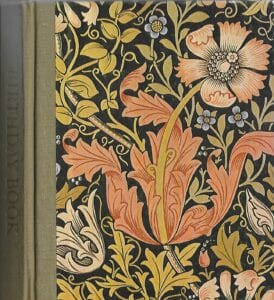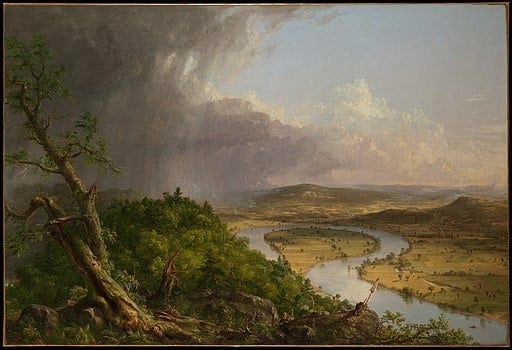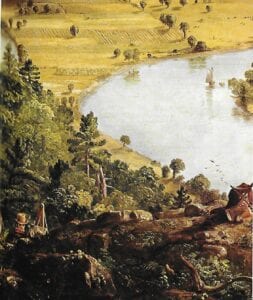The seasons they are a-changing! As artCentral artist Tyla Raredon writes:
New beginnings and endings. Long nights, a sleeping land. Cicadas, crickets and katydids are slowing their tempo, quieting down their exuberance.
Light is being clarified by the tilt of the Earth. A random bright orange leaf can be spotted.
Darkness creeps in earlier and earlier, pushing daylight into the shadows.
Birds once scattered, are forming flocks.
Butterflies are in abundance, fluttering around late blooming flowers.
A crow family, with a summer home elsewhere in town, has returned.
A light cool breeze can occasionally be felt, stirring up a slight smell of decay.
Sunflowers hang with heavy heads, bowing to the goldfinches…..
Yes, the seasons are a-changing as sunflowers bow their heads, and we are doing our best to keep up with all the birthdays in my husband David’s and my blended families. We’ve celebrated spring and summer birthdays. Now we look ahead to autumn’s and winter’s as we update David’s beautiful birthday book inscribed and given to him my his mother, Lydia Lucille. She, like David, was a gifted artist. We have several of her paintings displayed in Paradise.
 David’s birthday book is a splendid example of his mother’s impeccable, stylish taste. Published by the Museum of Art, New York, the cover replicates an art nouveau detail of a wallpaper design by Englishman William Morris (1834). The front and back endpapers are reproduction details of a textile design, “Brother Rabbit”, also by Morris.
David’s birthday book is a splendid example of his mother’s impeccable, stylish taste. Published by the Museum of Art, New York, the cover replicates an art nouveau detail of a wallpaper design by Englishman William Morris (1834). The front and back endpapers are reproduction details of a textile design, “Brother Rabbit”, also by Morris.
Throughout the book facing pages are set up so one is chronologically dated throughout a year with birth dates for well known artists and lines for entering other birthdays. Each companion page offers a reproduction of an exceptional work of art. Altogether the array of artworks reflects the diversity of the Museum’s collections.
The book includes architects, couturiers, cabinetmakers, goldsmiths, silversmiths, print-makers, photographers, illustrators and musical-instrument makers, as well as painters and sculptors—from Peter Paul Rubens (1577) to Rembrandt (1606); from Paul Revere (1735) to Mary Cassatt (1844), William Morris Tiffany (1848), Henri Toulouse-Lautrec (1864), Winslow Homer (1870) and Pablo Picasso (1881); from The House of Peter Carl Fabergé (1846) to Andrew Wyeth (1917) and David Hockney (1937). To turn a page, any page, is to be inspired and delighted!
 Delighted I am when I look at my own birthday pages! On the line beside my date, in his best cursive, David has written “My Beloved Wife Alice Lynn Greenwood-Mathé”. The image pairing with David’s inscription is an upclose detail of “The Oxbow” (The Connecticut River near Northampton, after a thunderstorm), 1896, a lushly rendered painting by Thomas Cole. I haven’t thought about Thomas Cole and his work for a very long time. When I hear myself musing, “Where did Thomas Cole go?”, I know I must refresh my art history memory.
Delighted I am when I look at my own birthday pages! On the line beside my date, in his best cursive, David has written “My Beloved Wife Alice Lynn Greenwood-Mathé”. The image pairing with David’s inscription is an upclose detail of “The Oxbow” (The Connecticut River near Northampton, after a thunderstorm), 1896, a lushly rendered painting by Thomas Cole. I haven’t thought about Thomas Cole and his work for a very long time. When I hear myself musing, “Where did Thomas Cole go?”, I know I must refresh my art history memory.
 The English-born Thomas Cole (February 1, 1801–February 11, 1848), known today for his romantic landscapes and history paintings, was one of the major 19th-century American painters. Cole emigrated with his family to the United States, and in 1818 they settled in Steubenville, Ohio.
The English-born Thomas Cole (February 1, 1801–February 11, 1848), known today for his romantic landscapes and history paintings, was one of the major 19th-century American painters. Cole emigrated with his family to the United States, and in 1818 they settled in Steubenville, Ohio.
Where did Thomas Cole go from Ohio? He went into the American wilderness. He took a steamship up the Hudson in the autumn of 1825, stopping first at West Point then at Catskill landing. He hiked west high into the eastern Catskill Mountains of New York where he painted the first landscapes of the area. Coming from England, the brilliant autumn colors in the American landscape inspired him.
Cole found work early on as an engraver and maintained a studio at the farm called Cedar Grove, in the town of Catskill, New York. He painted a significant portion of his work in this studio. Mostly a self-taught painter, he relied on books and studied the work of other artists. In 1836, he married Maria Bartow of Catskill. They had five children.
Cole is regarded as the founder of the Hudson River School, an American art movement that flourished in the mid-19th century and was embodied by a group of landscape painters whose aesthetic vision was influenced by Romanticism. Often juxtaposing peaceful agriculture and the remaining wilderness which was fast disappearing, they portrayed the American landscape as a pastoral setting, where human beings and nature coexisted peacefully. Their highly detailed paintings typically depicted the Hudson River Valley and surrounding area, including the Catskill, Adirondack and White Mountains just as they were becoming appreciated for their qualities of ruggedness and sublimity.
Where did Thomas Cole go?
Take a close look at the detail of his painting, “Oxbow”. What is that we see in the lowest center portion of the picture plane? Who is that—tucked in below the rocks back-dropped by trees? Is that not a painter at his easel—painting the lush forested and farmed summer landscape before the season changes into autumn? Can that man be Thomas Cole in his tall, stove pipe hat and white collar and scarlet cravat? Has he simply gone into his painting for us to see always and forever more, even now in our Carthage autumn as the sunflowers bow their heads?
















